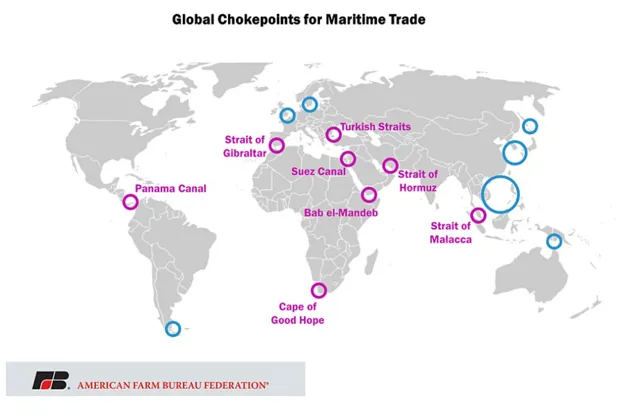An estimated 80% of global trade is transported by sea, making maritime routes crucial for international commerce. However, these routes are highly susceptible to disruptions at several geographic chokepoints, including human-made canals and naturally narrow passages. Recent complications, such as water level issues at the Panama Canal and attacks by Houthi rebels near the Bab el-Mandeb strait in the Red Sea, have significantly hindered trade through two vital corridors.
The Panama Canal, a pivotal link between the Atlantic and Pacific oceans, facilitates around 14% of U.S. maritime trade. In the fiscal year 2023, a substantial portion of cargo passing through this canal was associated with the United States, highlighting its importance for U.S. agricultural exports. The canal not only shortens the journey significantly compared to alternative routes but also reduces transit time, fuel costs, and labor expenses. Despite its efficiency, recent water level challenges have posed threats to its operational capacity, affecting the smooth flow of goods, particularly agricultural exports.
Simultaneously, the security situation around the Bab el-Mandeb strait has further complicated maritime trade. The strategic location of this narrow passage at the southern end of the Red Sea makes it a critical point for ships traveling to and from the Indian Ocean. The recent attacks in this area have raised concerns over the safety and reliability of one of the world's most crucial maritime routes.
These twin issues at the Panama Canal and Bab el-Mandeb have collectively amplified the vulnerabilities of global trade to geographical and geopolitical risks, underscoring the importance of maintaining secure and efficient shipping lanes for the international economy.
Source: fb.org

